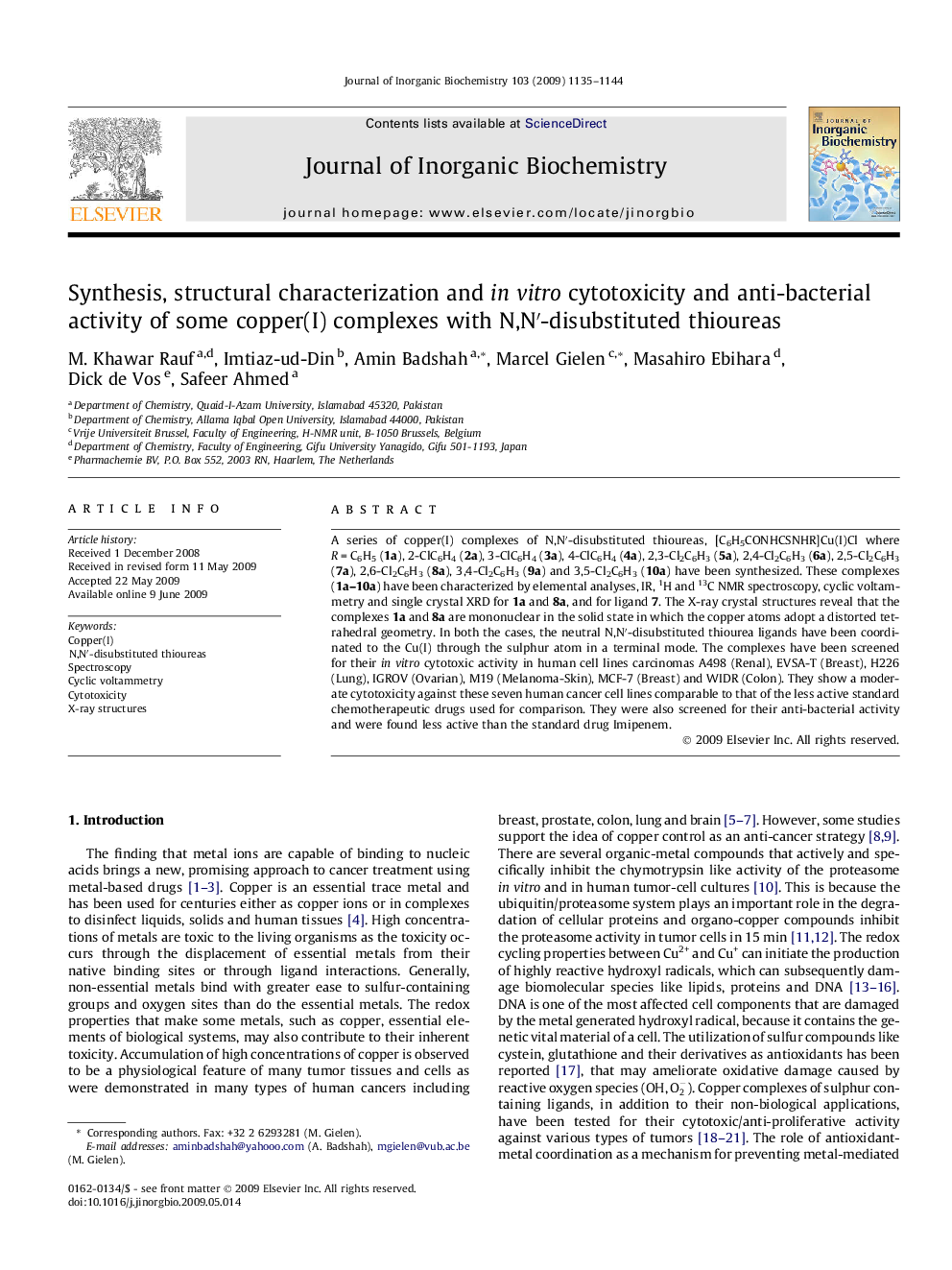| Article ID | Journal | Published Year | Pages | File Type |
|---|---|---|---|---|
| 1317280 | Journal of Inorganic Biochemistry | 2009 | 10 Pages |
A series of copper(I) complexes of N,N′-disubstituted thioureas, [C6H5CONHCSNHR]Cu(I)Cl where R = C6H5 (1a), 2-ClC6H4 (2a), 3-ClC6H4 (3a), 4-ClC6H4 (4a), 2,3-Cl2C6H3 (5a), 2,4-Cl2C6H3 (6a), 2,5-Cl2C6H3 (7a), 2,6-Cl2C6H3 (8a), 3,4-Cl2C6H3 (9a) and 3,5-Cl2C6H3 (10a) have been synthesized. These complexes (1a–10a) have been characterized by elemental analyses, IR, 1H and 13C NMR spectroscopy, cyclic voltammetry and single crystal XRD for 1a and 8a, and for ligand 7. The X-ray crystal structures reveal that the complexes 1a and 8a are mononuclear in the solid state in which the copper atoms adopt a distorted tetrahedral geometry. In both the cases, the neutral N,N′-disubstituted thiourea ligands have been coordinated to the Cu(I) through the sulphur atom in a terminal mode. The complexes have been screened for their in vitro cytotoxic activity in human cell lines carcinomas A498 (Renal), EVSA-T (Breast), H226 (Lung), IGROV (Ovarian), M19 (Melanoma-Skin), MCF-7 (Breast) and WIDR (Colon). They show a moderate cytotoxicity against these seven human cancer cell lines comparable to that of the less active standard chemotherapeutic drugs used for comparison. They were also screened for their anti-bacterial activity and were found less active than the standard drug Imipenem.
